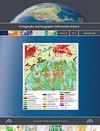Why we can read maps
IF 2.4
3区 地球科学
Q1 GEOGRAPHY
Cartography and Geographic Information Science
Pub Date : 2022-10-19
DOI:10.1080/15230406.2022.2127911
引用次数: 2
Abstract
ABSTRACT Maps, like other types of extensive data collections, are usually created and maintained by a larger number of individuals. The number of individuals using the map is even larger in most cases. Considering the complex interaction of these people, the question arises as to why maps can be used meaningfully. Ultimately, the represented geographical reality can rarely be perfectly reconstructed from the map, and misunderstandings are inevitable when using the map. This article sets factors into context that facilitate the readability of a map as well as factors that can lead to misunderstandings and non-interpretability. The creation of a map is thereby considered a complex system the stability, coherence, and heterogeneity of which can be explained by its attractors and, in the temporal context, by means of disruptive behavior and autopoiesis. To this end, a coherence theory of map making and reading is proposed. This allows for a broader perspective on the map-making process and a deeper understanding of a map’s affordances. In particular, the considerations made can serve as a starting point to develop better measures of data quality and fitness for purpose. Finally, a more reflective behavior and active influence on the map-making process is made possible.为什么我们可以阅读地图
摘要地图与其他类型的广泛数据收集一样,通常由更多的个人创建和维护。在大多数情况下,使用地图的人数甚至更多。考虑到这些人的复杂互动,产生了为什么地图可以被有意义地使用的问题。最终,所代表的地理现实很少能从地图中完美重建,使用地图时不可避免地会产生误解。本文将有助于地图可读性的因素以及可能导致误解和不可解释性的因素设置在上下文中。因此,地图的创建被认为是一个复杂的系统,其稳定性、连贯性和异质性可以通过其引诱物来解释,在时间背景下,可以通过破坏行为和自我生成来解释。为此,提出了地图制作与阅读的连贯性理论。这允许对地图制作过程有更广阔的视角,并对地图的可供性有更深入的理解。特别是,所做的考虑可以作为制定更好的数据质量和适用性衡量标准的起点。最后,使地图制作过程中更具反思性的行为和更积极的影响成为可能。
本文章由计算机程序翻译,如有差异,请以英文原文为准。
求助全文
约1分钟内获得全文
求助全文
来源期刊
CiteScore
5.20
自引率
20.00%
发文量
23
期刊介绍:
Cartography and Geographic Information Science (CaGIS) is the official publication of the Cartography and Geographic Information Society (CaGIS), a member organization of the American Congress on Surveying and Mapping (ACSM). The Cartography and Geographic Information Society supports research, education, and practices that improve the understanding, creation, analysis, and use of maps and geographic information. The society serves as a forum for the exchange of original concepts, techniques, approaches, and experiences by those who design, implement, and use geospatial technologies through the publication of authoritative articles and international papers.

 求助内容:
求助内容: 应助结果提醒方式:
应助结果提醒方式:


